What is a roll off dumpster liner?
A roll off container liner is essentially a large, very thick disposable trash bag that lines your roll off container just like a trash bag lines a trash can.
They come in a range of thicknesses ranging from 3 mil to 10 mil, to accomodate the kind of waste you are dealing with. They come in a range of sizes that are specifically shaped for each common container size.
They have several benefits including:
- Reduce the risk of leakage
- Faster, safer and easier washout process
- Avoid liquid waste freezing onto container walls in winter
- Prolong the life of of your roll off container
- Contain dust, dirt, debris, asbestos, contaminated soil and more
- Adhere to certain specific waste hauling regulations
Common uses of our liners include these and more:
- Oil field drill cuttings from oil rigs
- Recycling facilities
- Waste management
- Sewage and water treatment facilities
- Construction and roofing
- Manufacturing waste
- Chemical manufacturing
- Food waste from food manufacturers, breweries, restaurants, farms, coffee roasters, etc

What are the most common dumpster sizes?
2 Yard, 4 Yard, 15 Yard, 20 Yard, 30 Yard, 40 Yard Dump Trailer
Why are dumpsters measured in yards?
Yards refers to "cubic yards" of volume. Dumpster sizes are measured by the volume of waste they can hold. One cubic yard is 3 feet by 3 feet by 3 feet. So, for example, a small 2 yard dumpster can hold 2 cubic yards of waste which is 3x3x3 feet times 2 which is 54 cubic feet of waste.
What do the mil thicknesses mean?
Plastic film thickness is measured in mils. A mil is 1/1000 of an inch. The lowest mil thickness we sell is 3 mil which is the typical thickness of a standard heavy duty contractor bag. Generally speaking, the lighter and less jagged your debris is, the lower the mil you need. And the heavier or more jagged your your debris is, the higher the mil you need.

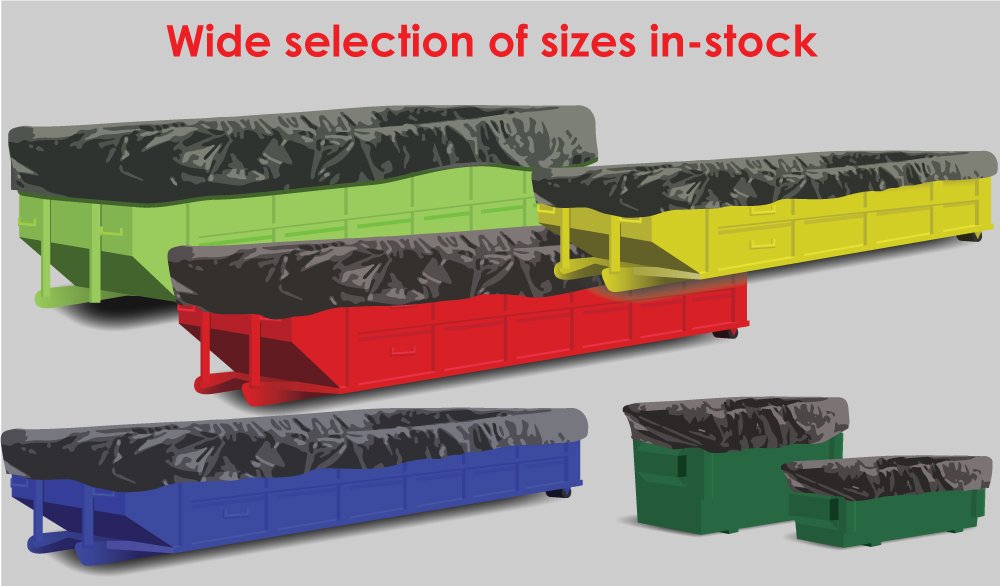
How to install a dumpster liner
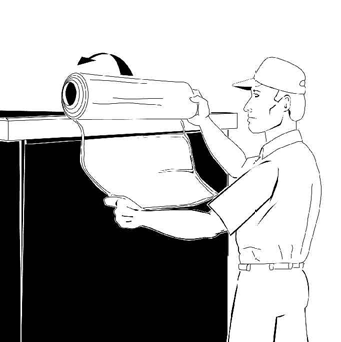 1. Standing at the centerline of the outside end of the container, place the roll on the top edge of the container allowing approx. 1 foot to hang loose down the outside end wall. Push the roll into the container allowing the liner to roll down the inside end wall and across the bottom of the container to the other end. |
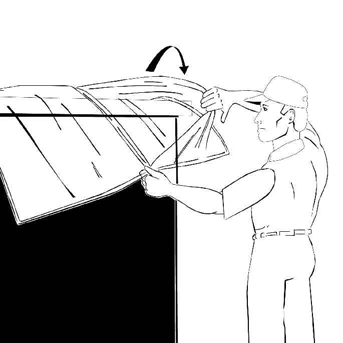 2. Unfold the liner so that the center slit of the liner is on the centerline of the end wall. Do not tear the end seam. From the center slit, take the top layer of the liner and secure it over the corner of the container. Note: you will need to pull material towards you from the sidewall of the liner in order to do this without tearing the end seam. |
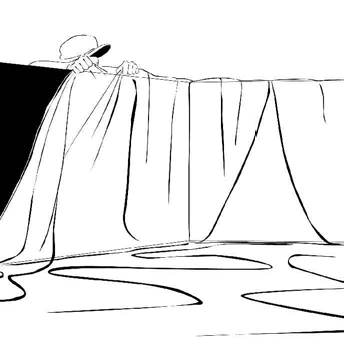 3. With the top layer now secured over the corner, continue down the side of the contianer pulling the top layer out and over the sidewall. Continue this procedure around the entire perimeter of the container. |
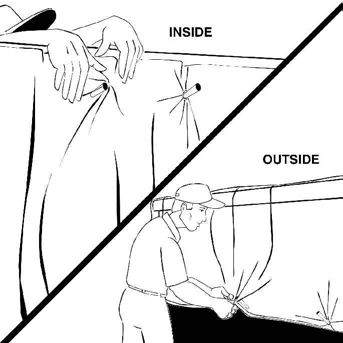 4. Hooks on the outside or inside may secure the liner, depending on the container design or job specifications. |
